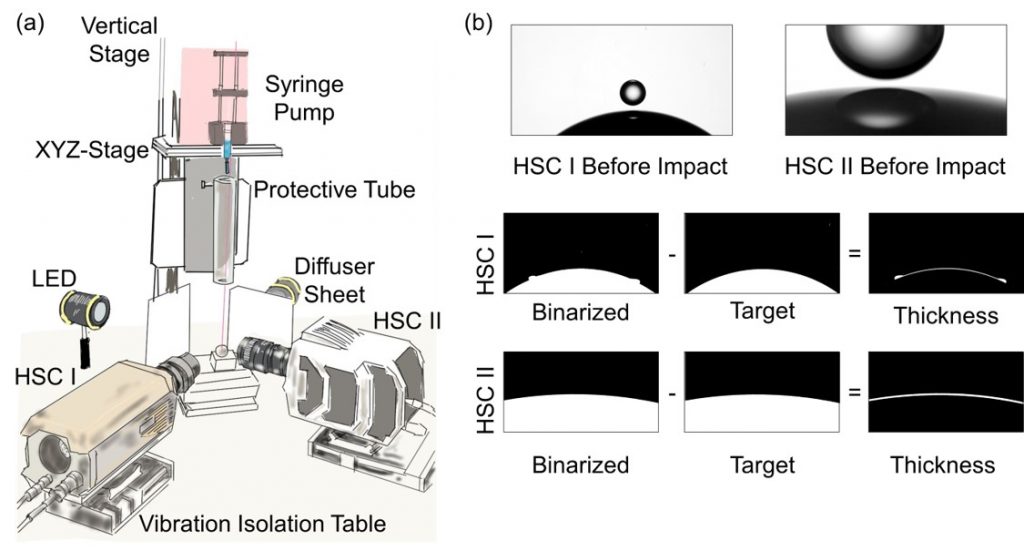Liquid droplet splashing on various surfaces, including complex ones, is a widely studied topic in fluid mechanics. Recently, there has been growing interest in using nanofluids, which are created by adding nanoparticles to regular fluids, for applications like spray cooling. Despite the fact that a small nanoparticle addition doesn’t alter the fluid’s viscosity, it has a significant effect on splashing behavior. This means that we need to combine insights from studying nanosuspension rheology with this complex problem, as we deal with a seemingly simple material in a complex flow.
ESR05 is on a mission to explore the role of nanoparticles in the elongation and breakup of drops during the splashing of nanofluids. Below is a preliminary results video of a nanofluid drop splashing on a flat smooth surface. More details are published in the initial perspective paper “Role of Nanoparticles in Nanofluid Droplet Impact on Solid Surfaces” in Langmuir.


